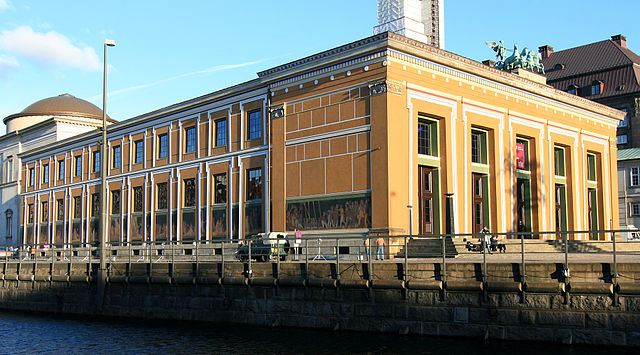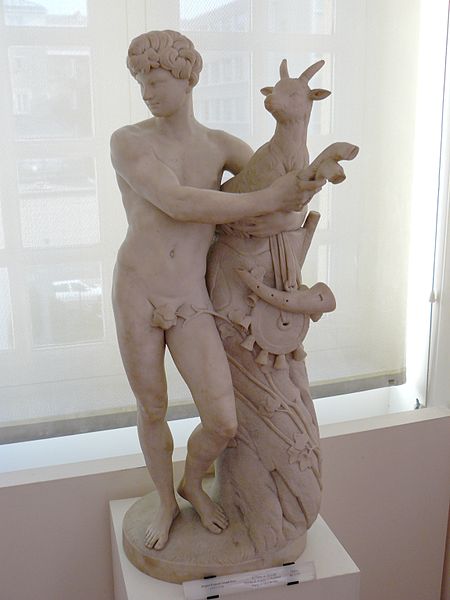Danish sculpture as a nationally recognized art form can be traced back to 1752 when Jacques Saly was commissioned to execute a statue of King Frederick V of Denmark on horseback. While Bertel Thorvaldsen was undoubtedly the country's most prominent contributor, many other players have produced fine work, especially in the areas of Neoclassicism, Realism, and in Historicism, the latter resulting from growing consciousness of a national identity. More recently, Danish sculpture has been inspired by European trends, especially those from Paris, including Surrealism and Modernism.
Equestrian bronze statue of King Frederik V created in Neoclassical style by Jacques Saly in 1768
Removal from the Cross at Ribe Cathedral (ca. 1175)
Johannes Wiedewelt:Frederik V's sarcophagus (1769) in Roskilde Cathedral
The Thorvaldsen Museum in Copenhagen
Jacques François Joseph Saly, also known as Jacques Saly, French-born sculptor who worked in France, Italy and Malta. He is commonly associated with his time in Denmark he served as Director of the Royal Danish Academy of Art (1754–71). His most noteworthy work is the equestrian statue Frederik V on Horseback at Amalienborg.
Jens Juel, Portrait of Jacques Saly, oil on canvas, 1772
Le Faune au chevreau Musée Cognacq-Jay
Jacque Saly's monumental sculpture of Frederik V on Horseback at Amalienborg Castle in Copenhagen, Denmark.
J.M. Preisler's engraving of Saly's equestrian sculpture of Frederik V on horseback. 1768-69.








